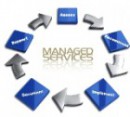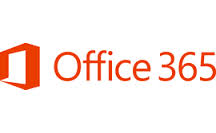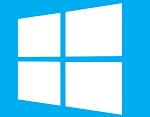When the time is right for your business to bring on a Managed IT Services provider there are several things to consider before signing a contract. Businesses both large and small have certain needs that are better managed by professionals. Contracting with a managed service provider allows owners and upper level management to focus their attention on growing and managing the business. Teaming up with a managed service provider has several benefits if you choose the right partner. Conversely bringing on a managed service provider that doesn’t understand your needs or one that is unable to provide the level of service required can be an expensive mistake. Here we look at the things you should consider before signing on the dotted line.*
1. Does the Managed IT Services contract support the goals of both parties? When it comes right down to it, every business is in existence to turn a profit. When you select a Managed IT Services provider you want to find one that will work with you to help your company achieve its goals. A Managed IT Services Provider that is interested in selling services or products that don’t match the needs of your company, just for the sake of making money is one that should be avoided. You are contracting with a provider that will maintain vital company systems, therefore you want someone on your side who is able and willing to create a package and price that reflects your needs and not their bottom line.
2. Will Managed IT Services be cost effective? When you enter an agreement with a Managed IT Services Provider, you are agreeing to pay a predetermined amount of money for their support and services. This can be very cost effective versus paying an hourly rate for IT support. In most cases hiring a Managed IT Services Provider is the best way to go if you have sufficient need for the services provided. Traditionally companies who pay hourly rates tend to spend less money on IT support which may improve profit but decrease services or support that are needed. When you have a Managed IT Services Provider in your corner, you can feel confident all vital areas are being covered regardless of the number of hours needed to do so.
3. Compare several Managed IT Services companies before making your final decision. It is easy to get lost in the mumble jumble of the IT world when you don’t understand the language being spoken. While this can be discerning, don’t let a language barrier lead to a poor business decision. You are hiring a Managed IT Services Provider to cover technological areas outside of your expertise, however you don’t want to be completely unaware of what is going on within your company. Research several companies and look beyond savvy marketing to find a company that is the right partner to help grow your business. This includes carefully reviewing services included in the contract as well as customer service, availability and the capacity to handle changes within the industry. If you don’t understand something, ask questions or you might find yourself paying for services you don’t really need.
Signing a contract with a Managed IT Services Provider ties you to that provider according to the terms of the contract. Once you have taken this step it is important to remain in the loop regarding services provided. Review progress on a regular basis to ensure the needs of your business are being met. If you have done your homework and signed on with the right Managed IT Services Provider, you will have one less thing to worry about when it comes to managing your business.
*Sources: SPC International Online, Inc.
If you would like to know more, please contact us at 1-800-871-9683 for a free consultation. Also, if you do not have online BDR (backup-disaster-recovery) and anti-virus/malware protection for your business, please give us a call to help you implement the latest systems. Our email address is: markhuffman@creativebusinesstechnologies.com





